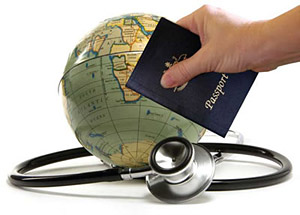
|  |  |  Travel & Outdoors | November 2009 Travel & Outdoors | November 2009  
Recession Slows Growth of Medical Tourism from 2007-2009
 Deloitte Center for Health Solutions Deloitte Center for Health Solutions
go to original


| | Economic recovery likely to result in 35 percent annual growth rate for medical tourism by 2010. |  |
While the economic recession has eroded the growth rate for medical tourism by approximately 13.6 percent from 2007 to 2009, the economic recovery may help spur a sustainable 35 percent annual growth rate for the medical tourism industry by 2010, according to a new report released last week by the Deloitte Center for Health Solutions at the World Medical Tourism and Global Health Congress in Los Angeles, California.

"Barring any tempering factors, such as supply constraints, resistance from health plans, increased domestic competition or government policies, we project that outbound medical tourism could reach upwards of 1.6 million patients by 2012," said Paul Keckley, Ph.D. and executive director, Deloitte Center for Health Solutions, based in Washington, D.C. "Medical tourism has transitioned from a cottage industry to an acceptable alternative for elective care that, despite the setbacks of the economic downturn, may begin to recover in 2010, as quality is better defined, new business models emerge, insurers, legislators and employers explore pilots and programs, health care providers become increasingly involved in coordinating care and consumers continue to test it out to explore savings."

According to the Deloitte Center report, "Medical Tourism: Update and Implications," in 2007, more than 750,000 Americans traveled abroad for outbound medical care. Since 2007, medical tourism has experienced a slow down driven by the economic recession and consumers putting off elective medical procedures over the past two years with an estimated 540,000 Americans traveling abroad for medical care in 2008 (a 20 percent decrease) and a projected 648,000 (a 10 percent decrease) doing so in 2009.

"The prolonged U.S. recession has had a significant impact on patients' ability to afford medical care, and by extension their use of medical tourism," added Keckley. "Pent-up consumer demand for elective procedures, especially outpatient dental and cosmetic procedures, will help fuel increased demand for medical tourism again. Health reform efforts in the near term will also likely contribute to medical tourism's growth, though in the long run it is difficult to assess given uncertainty about the public option, employer and individual mandates."

Among the additional key findings highlighted in the report:

• Inbound medical tourism, or foreigners visiting the U.S. to receive medical care, will see relatively slow growth to report up to 561,000 travelers by 2017.

• Eight percent of respondents sought health care services outside of their immediate community; more than 40 percent said they would travel outside of their immediate area for care if their physician recommended it or for a 50 percent cost savings; 1 percent reported using an offshore health care provider; 9 percent said they'd be likely to do so; and 69 percent said they'd be unlikely to do so.

• The American Medical Association (AMA) has developed a set of nine guidelines for medical tourism for employers, insurance companies and other entities that facilitate medical care outside of the U.S.

• Several health insurers have launched medical tourism pilots as part of health benefit plans. An overview of these programs and affiliations with foreign medical sites is included, and it is yet to be determined if these pilots will be adopted on a broad scale and whether employers or patients will receive the benefits of cost savings via reduced premiums, co-payments or deductibles.

• West Virginia and Colorado have attempted to pass legislation that would either require or incentivize insurers to incorporate medical tourism within their health benefits plans. Although both bills did not pass, they demonstrate that state legislators are paying more attention to the value of medical tourism.

• The Joint Commission International (JCI) has increased the number of approved foreign medical sites from 76 in 2005 to more than 220 in 2008.

• India's medical tourism sector is expected to grow 30 percent annually from 2009 to 2015.Health care reform will likely propel growth in the elective outpatient market, particularly if flex account expenditures are limited to $2,000 or less, and elective cosmetic and dental procedures are not considered "basic benefits."

"With health care costs increasing at the rate of 6 percent per year for the next decade, and medical tourism offering savings of up to 70 percent after travel expenses, there is no question that it will remain an important option for consumers who need care, but increasingly lack adequate out-of-pocket funds to afford a procedure in the U.S.," added Keckley. "As the industry continues to respond to the needs of this population, we expect to see an increase in medical tourism pilots and involvement by employers, insurers and physicians to help create a backdrop for sustainable, healthy growth in this sector." |

 |
|  |



